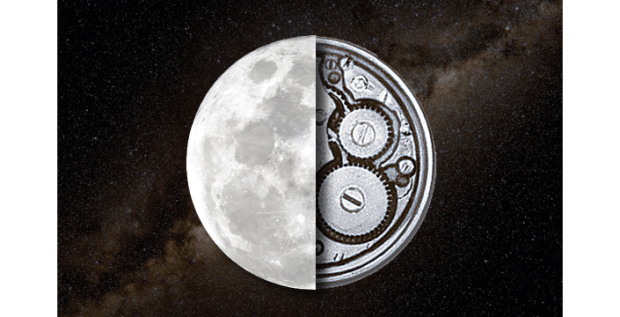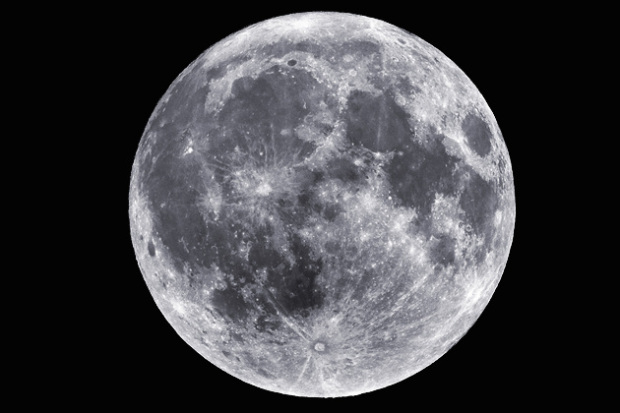
For a number of years both scientist and researchers have been making claims that the moon is hollow!
Claims have also been made that “the moon should not be here”
NASA scientist Robin Brett once said: “It seems easier to explain the non-existence of the moon, than its existence.”
The mystery of the moon
Ultrasensitive seismic equipment has been placed on the moon by the astronauts.
When Apollo 12 and Apollo 13 left the moon, they jettisoned the ascent stages of their spacecraft. The pieces of the craft fell back and hit the moon. Despite the relatively small size of these objects, when they struck, the entire moon reverberated for over eight minutes! The moon registered as being more hollow than full!
Scientists at NASA said, “It reacted like a gong!” They are at a loss to explain this, and so they avoid discussing it with the public.
No convincing explanation for this has ever been published!
Who moved the moon?
Chemical analysis showed that the composition of the moon rocks brought back by the Apollo missions, along with the moon dust samples, showed them to be completely different from each other. meaning the dust and the rocks are unexplainable, as they are so different.
At the time, NASA quoted “it appears as if the moon was created somewhere – and the rocks, someplace else!”

Several science fiction books of the early 20th century, including H.G. Wells’ “The First Men in the Moon,” take place within a hollow moon inhabited by aliens. In 1970 two Soviet scientists took this seemingly whimsical premise a step further, proposing that the moon is actually a shell-like alien spacecraft built by extraterrestrials with superior technology and intelligence. According to astronomers, the moon—though admittedly enigmatic as far as celestial bodies go—couldn’t maintain its mass and gravitational field if it lacked a dense core.
The Spaceship Moon Theory, also known as the Vasin-Shcherbakov Theory, is a theory that claims the Earth‘s moon may actually be an alien spacecraft. The theory was put forth by two members of the then Soviet Academy of Sciences, Michael Vasin and Alexander Shcherbakov, in a July 1970 article entitled “Is the Moon the Creation of Alien Intelligence?”. Vasin and Shcherbakov’s thesis was that the Moon is a hollowed-out planetoid created by unknown beings with technology far superior to any on Earth. Huge machines would have been used to melt rock and form large cavities within the Moon, with the resulting molten lava spewing out onto the Moon’s surface. The Moon would therefore consist of a hull-like inner shell and an outer shell made from metallic rocky slag. For reasons unknown, the “Spaceship Moon” was then placed intoorbit around the Earth. Their theory relies heavily on the suggestion that large lunar craters, generally assumed to be formed from meteor impact, are generally too shallow and have flat or even convex bottoms. Small craters have a depth proportional to their diameter but larger craters are not deeper. It is theorized that small meteors are making a cup-shaped depression in the rocky surface of the moon while the larger meteors are drilling through a five mile thick rocky layer and hitting a high-tensile “hull” underneath. Additionally the authors note that the surface material of the moon is substantially composed of different elements (chromium, titanium and zirconium) from the surface of the Earth. They also note that some moon rocks are older than the oldest rocks on Earth. They postulate that the moon comprises a rocky outer layer a few miles thick covering a strong hull perhaps 20 miles thick and beneath that there is a void, possibly containing an atmosphere. In 1975, Don Wilson[disambiguation needed] published Our Mysterious Spaceship Moon in which he compiled what he considered supporting facts for this theory. In 1976 George H Leonard published Someone else is on the Moon in which he reprinted numerous NASA photographs of the lunar surface and suggested that large scale machinery was visible in these pictures. Readers have generally not been able to see these artifacts.

Criticisms
Suniti Karunatillake of Cornell University suggests that there are at least two ways to determine the distribution of mass within a body. One involves moment of inertia parameters, the other involves seismic observations. In the case of the former, Karunatillake points out that, “[O]ne such parameter, the normalized polar moment of inertia, is 0.393+/-0.001, which is very close to that for a solid object with radially constant density (0.4; for comparison, Earth’s value is 0.33). As for the latter, he notes that the moon is the only planetary body besides Earth on which extensive seismic observations have been made. These observations have constrained the thickness of the moon’s crust, mantle and core, suggesting it could not be hollow. Karen Masters of University of Portsmouth similarly suggests that, based on the behavior of objects interacting with thegravitational field of the moon, we can determine the mass of the moon. Given the observable size of the moon, we can then calculate the density, which strongly rejects the notion that the moon could be hollow.
The evidence proved that the moon rocks had somehow got placed on the surface from somewhere else – a billion years or so, after the dust found on the moon had been formed.
All modern theories of how the moon was formed are based on the premise that at one time the earth and the moon were one – but nobody can explain the moon rocks.
Originally posted 2015-07-20 05:31:01. Republished by Blog Post Promoter











